Asia-Pacific Nuclear Medicine Market Size
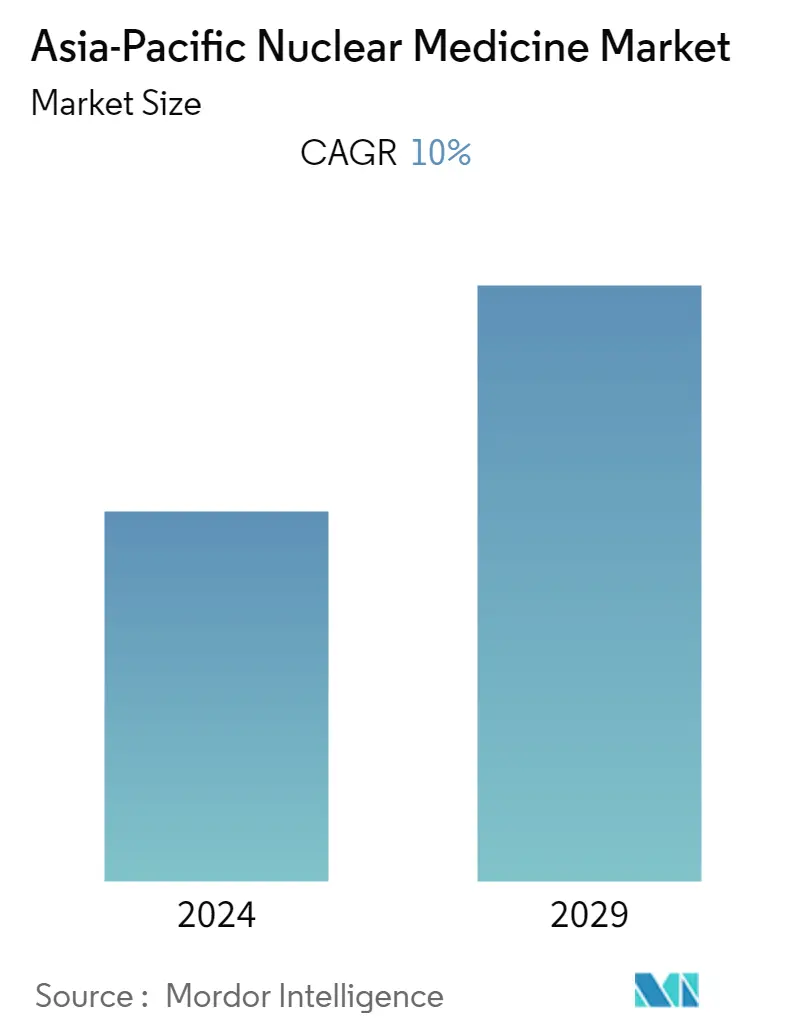
| Study Period | 2019 - 2029 |
| Base Year For Estimation | 2023 |
| Forecast Data Period | 2024 - 2029 |
| Historical Data Period | 2019 - 2022 |
| CAGR | 10.00 % |
Major Players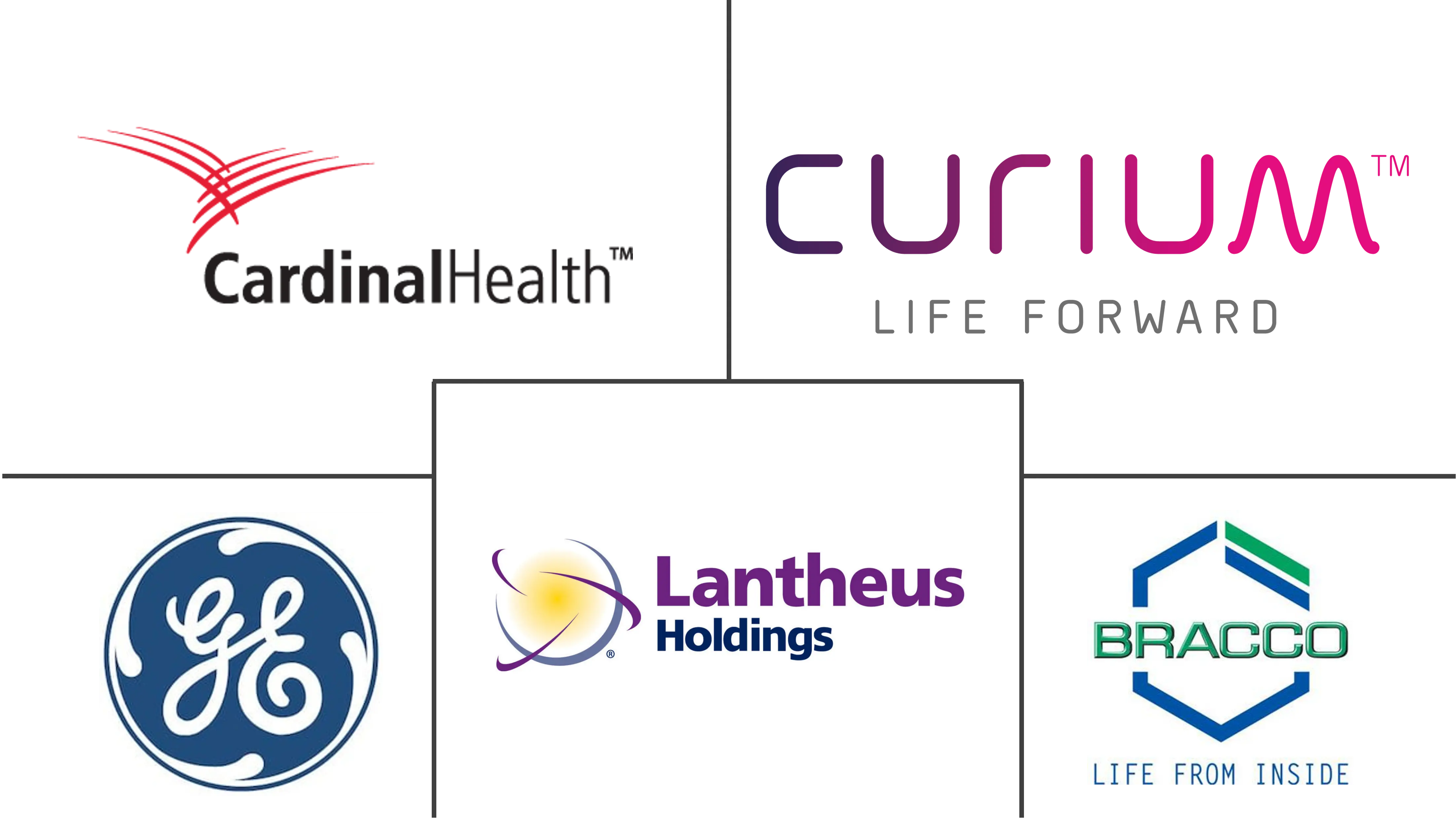
*Disclaimer: Major Players sorted in no particular order |
Asia-Pacific Nuclear Medicine Market Analysis
The Asia-Pacific Nuclear Medicine Market is expected to register a CAGR of 10.0% during the forecast period.
The COVID-19 pandemic has posed severe challenges to healthcare systems in Asia-Pacific. It has primarily been controlled by drastically cutting down in- and outpatient services for diseases and implementing infection prevention and control measures. For instance, an article published in January 2022 stated that the practice of nuclear medicine was reduced significantly as Asian countries were affected by the COVID-19 pandemic. In addition, as per the same source, some of the factors that resulted in the closure of a quarter of nuclear medicine clinics in the region were the lack of radioactive isotopes supplies, conversion of nuclear medicine wards into COVID-19 wards, and the deployment of doctors and paramedics to assist in the management of COVID-19 cases. Also, it has been observed that the supply of radioactive isotopes was severely reduced by 50% and was absent in 25% of these departments. Furthermore, from the same source, a survey conducted from March to April 2021 showed that the practice and supply of nuclear medicine and radioactive isotopes have recovered, and the rule of nuclear medicine increased by 41% in 2021. Thus, COVID-19 has significantly impacted market growth.
Specific factors propelling the market growth are the rising prevalence of cancer and cardiac disorders and the increasing demand for biosimilar drugs due to their cost-effectiveness.
The increasing number of chronic disease cases, such as cardiac disorders and cancer, is the key factor driving the market growth. For instance, from a study published in May 2022, it has been observed that 805 persons with type 2 diabetes (T2D) were enrolled in China, 273 of whom had established cardiovascular disease (CVD), with an estimated prevalence (95%) of 33.9% and most CVD cases were atherosclerotic (94.9%). As per the same source, coronary heart disease had the highest estimated prevalence (16.0%), followed by carotid artery disease (9.6%) and cerebrovascular disease (7.7%). Thus, the rising burden of cardiovascular disease among the population is expected to increase the demand for nuclear medicine for diagnosing, assessing, and evaluating coronary artery diseases and cardiomyopathy, as well as identifying possible damage to the heart from chemotherapy or radiotherapy, propelling the market growth.
Additionally, according to the Globocan 2020 report, over 19,617 new breast cancer cases were reported in Australia in 2020. This number is projected to increase by 33.2% to around 26,130 new breast cancer cases by 2040. Thus, the rising burden of cancer among the population is expected to increase the demand for nuclear medicine that helps physicians detect tumors and their spread in the area, as well as the radioactive molecules (drugs) that help to kill the cancer cells in the body, thereby fueling the market growth.
Similarly, self-reported data from the Australian Bureau of Statistics 2020-21 National Health Survey showed that 571,000 Australians aged 18 and over (2.9% of the adult population) had chronic heart disease. Thus, the high burden of chronic illness is expected to increase the demand for nuclear medicine that helps diagnose and assess heart diseases and identify possible damage to the heart from chemotherapy or radiotherapy, thereby propelling the market growth.
Furthermore, from a study published in May 2021, it has been observed that the overall crude prevalence of Parkinson's disease in India was around 42.3 per 100,000, and the majority over the age of 60 was 308.9 per 100,000, which showed a trend of increasing disease prevalence with age. Also, as per a population-based cross-sectional survey published in February 2022, in China, the standardized prevalence of Parkinson's disease in urban areas (1.98%) was higher than that in rural regions (1.48%), and the crude prevalence of PD in men (2.12%) was higher than that in women (1.66%). Hence, the increasing burden of Parkinson's disorder is expected to increase the demand for PET scans to assess the activity and function of brain regions involved in the movement, which is anticipated to augment the market growth over the forecast period.
However, the high cost of diagnostic and therapeutic equipment and procedures and regulatory uncertainty hinder the market growth over the forecast period.
Asia-Pacific Nuclear Medicine Market Trends
This section covers the major market trends shaping the APAC Nuclear Medicine Market according to our research experts:
Oncology Segment Expects to Register a High CAGR in the Asia-Pacific Nuclear Medicine Market Over the Forecast Period
The oncology segment is expected to witness significant market growth over the forecast period owing to the factors such as the rising prevalence of cancer in Asia-Pacific and increasing SPECT/PET applications.
The increasing prevalence of cancer is boosting the demand for radioisotopes for nuclear imaging for research purposes. For instance, according to the GLOBOCAN 2020 fact sheet, 200,021 new cancer cases were diagnosed in Australia in 2020, while the number of prevalent cases (5 years) of cancer was 808,997 in Australia in 2020. The most common cancers in Australia are breast cancer, prostate cancer, melanoma of the skin, lung cancer, colon cancer, and kidney cancer.
Additionally, as per the same source, 1,324,413 new cancer cases were diagnosed in India in 2020, while the number of prevalent cancer cases (5 years) was 2,720,251 in India in 2020. Thus, the high burden of cancer cases among the population increases the demand for nuclear medicine, which is anticipated to increase the demand for cancer drugs, thereby propelling segment growth.
Furthermore, the rising company activities in developing nuclear medicine for treating cancer also contribute to the market growth. For instance, in September 2021, ITM AG signed a long-term strategic agreement to create a Joint Venture with Chengdu Gaotong Isotope Co. Ltd to supply ITM's EndolucinBeta (n.c.a. 177Lu) and Gallium Generators to the rapidly emerging Chinese radiopharmaceutical industry. Similarly, in September 2021, FUJIFILM Toyama Chemical Co., Ltd. launched Lutathera Injection (INN: lutetium (177Lu) oxodotreotide) for the treatment of somatostatin receptor-positive neuroendocrine tumors in Japan.
Therefore, the studied market is expected to increase due to the factors above over the forecast period.
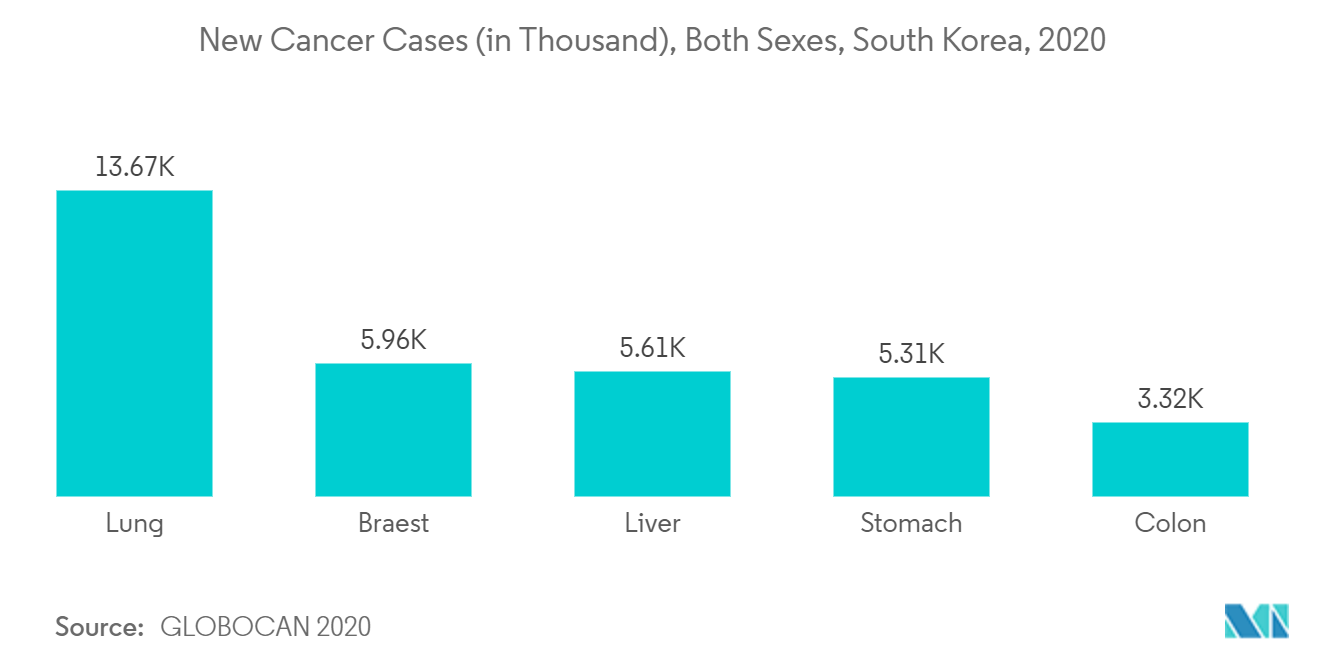
India is Expected to Have the Significant Market Share in Asia-Pacific Nuclear Medicine Market Over the Forecast Period
India is expected to witness significant growth in the Asia-Pacific nuclear medicine market over the forecast period. the factors attributed to the market growth are the rising prevalence of cancer and cardiac disorders and the increasing demand for biosimilar drugs due to their cost-effectiveness.
The increasing number of chronic diseases such as cancer, cardiovascular disease, diabetes, and others is the key factor driving the market growth. For instance, according to GLOBOCAN 2020 fact sheet, 1,324,413 new cancer cases (646,030 males and 678,383 females) were diagnosed in 2020 in India. In addition, as per the same source, 178,361 breast cancer, 123,907 cervix uteri cancer, 72,510 lung cancer, 60,222 stomach cancer, and 34,743 liver cancer were diagnosed in 2020. Thus, the high burden of cancer cases among the Indian population is expected to increase the demand for nuclear medicine that helps in treating different forms of cancer, thereby propelling the market growth.
Additionally, the rising company activities in developing nuclear medicine for treating cancer are also contributing to the market growth. For instance, in January 2021, the Bhabha Atomic Research Centre (BARC) in India developed a method to obtain ruthenium-106 of medical quality, enabling domestic production of plaques of the substance for use in treating eye cancer. Also, in May 2020, the Finance Minister of India announced the launch of a research reactor in public-private partnership (PPP) mode to facilitate the production of medical isotopes for the treatment of cancer and other diseases (DAE).
Therefore, the due to aforementioned factors the studied market is expected to increase over the forecast period.
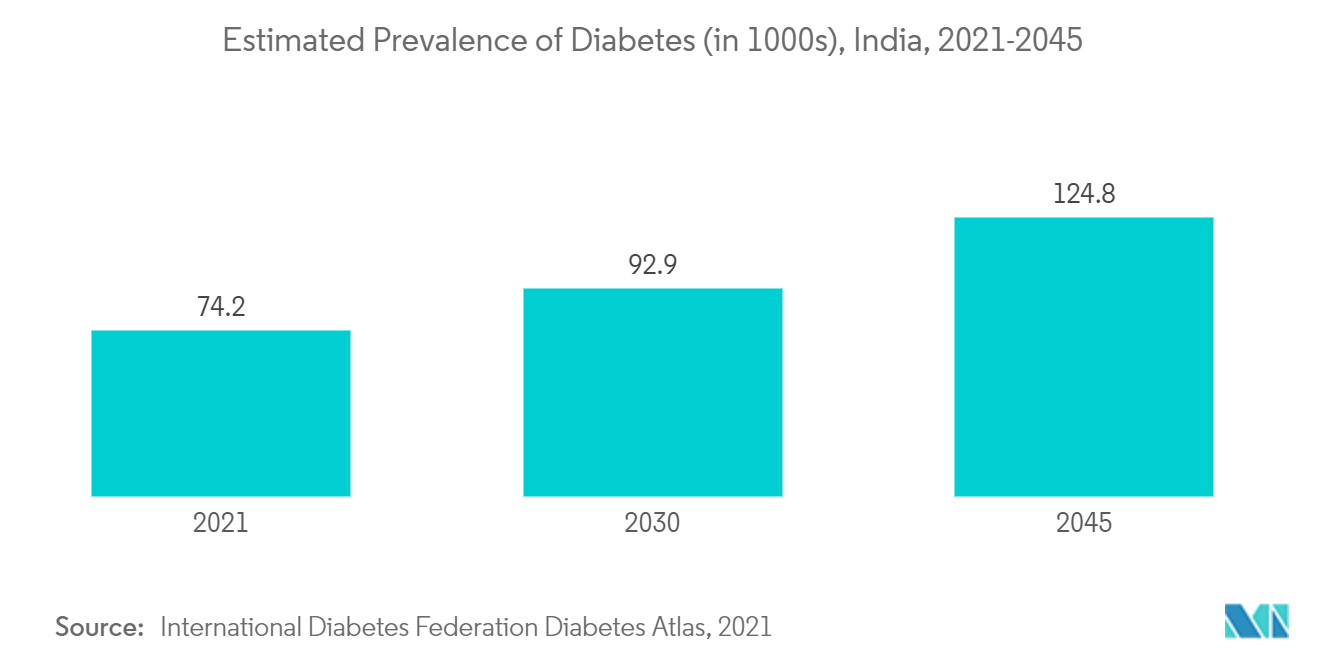
Asia-Pacific Nuclear Medicine Industry Overview
There is moderate competition among the players in the Asia-Pacific Nuclear Medicine market. However, this competition is not by competitive pricing or product differentiation. Additionally, big players in the pharmaceutical and biotechnology industries are leveraging their vast capital reserves to venture into this market, further increasing the competition. It is expected that in the coming years, a few small to mid-sized companies will penetrate the market and hold a substantial share in the Asia-Pacific region. Some of the companies in the market are Cardinal Health, Curium, Lantheus Medical Imaging, Inc., GE Healthcare, and Bracco Diagnostic Inc.
Asia-Pacific Nuclear Medicine Market Leaders
-
Cardinal Health
-
Curium SAS
-
Lantheus Medical Imaging
-
GE Healthcare
-
Bracco Diagnostic Inc..
*Disclaimer: Major Players sorted in no particular order
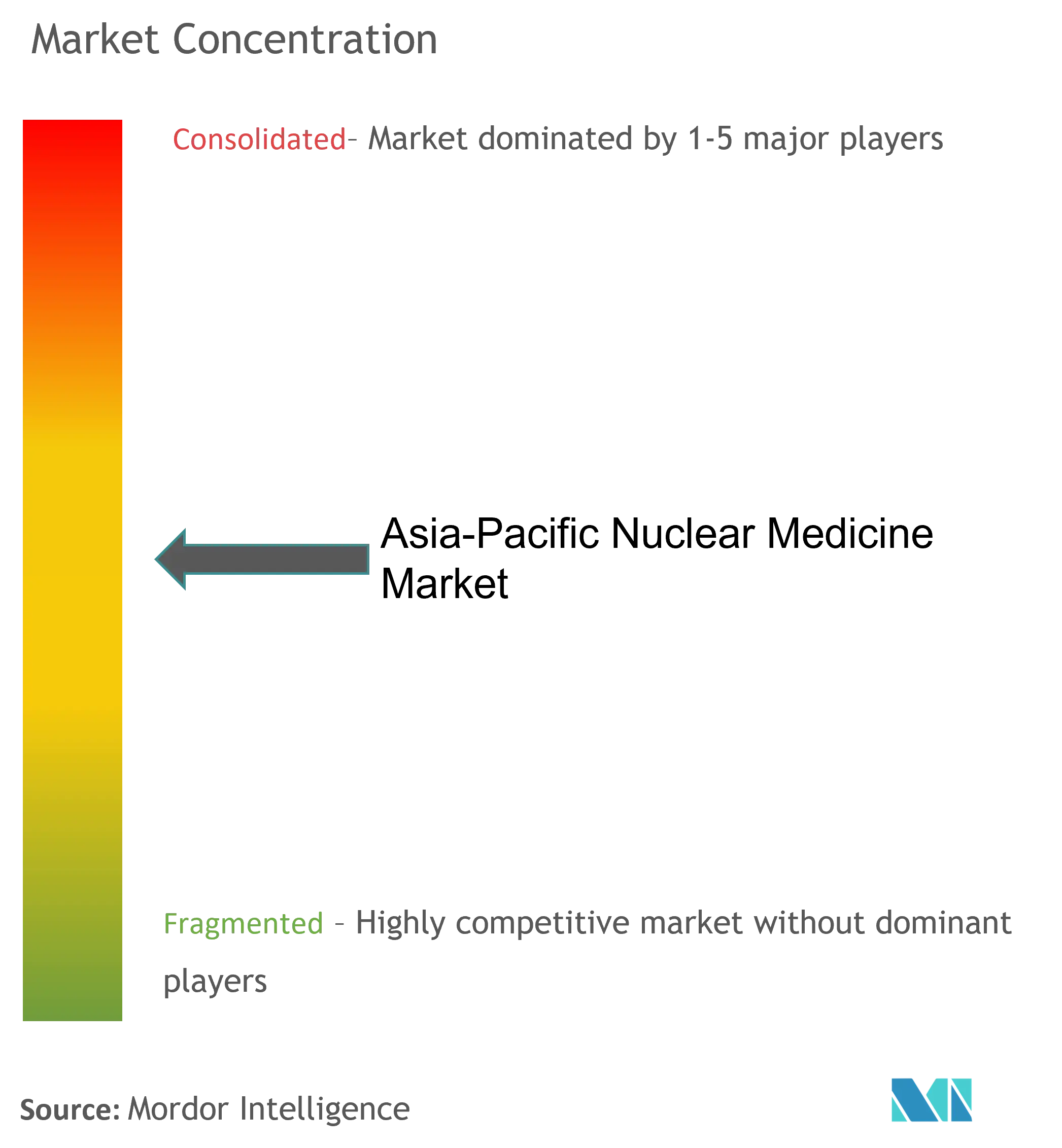
Asia-Pacific Nuclear Medicine Market News
- In May 2022, Ion Beam Applications S.A. received an order from CGN Medical Technologies for a Proteus PLUS proton therapy system to be installed in Yangzhou, China.
- In January 2022, Clario and XingImaging expanded their partnership to deliver PET imaging clinical trials for testing novel therapeutics in China.
Asia-Pacific Nuclear Medicine Market Report - Table of Contents
1. INTRODUCTION
- 1.1 Study Assumptions and Market Definition
- 1.2 Scope of the Study
2. RESEARCH METHODOLOGY
3. EXECUTIVE SUMMARY
4. MARKET DYNAMICS
- 4.1 Market Overview
-
4.2 Market Drivers
- 4.2.1 Rise in Prevalence of Cancer and Cardiac Disorders
- 4.2.2 Increasing Demand for Biosimilar Drugs Due to Their Cost Effectiveness
-
4.3 Market Restraints
- 4.3.1 High Cost of the Diagnostic and Therapeutic Equipment and Procedures
- 4.3.2 Regulatory Uncertainty
-
4.4 Porter's Five Force Analysis
- 4.4.1 Threat of New Entrants
- 4.4.2 Bargaining Power of Buyers/Consumers
- 4.4.3 Bargaining Power of Suppliers
- 4.4.4 Threat of Substitute Products
- 4.4.5 Intensity of Competitive Rivalry
5. MARKET SEGMENTATION (Market Size by Value - USD million)
-
5.1 By Product
- 5.1.1 Diagnostics
- 5.1.1.1 Single Photon Emission Computed Tomography (SPECT)
- 5.1.1.2 Positron Emission Tomography (PET)
- 5.1.2 Therapeutics
- 5.1.2.1 Alpha Emitters
- 5.1.2.2 Beta Emitters
- 5.1.2.3 Brachytherapy
-
5.2 By Application
- 5.2.1 Cardiology
- 5.2.2 Neurology
- 5.2.3 Oncology
- 5.2.4 Other Applications
-
5.3 Geography
- 5.3.1 China
- 5.3.2 Japan
- 5.3.3 India
- 5.3.4 Australia
- 5.3.5 South Korea
- 5.3.6 Rest of Asia-Pacific
6. COMPETITIVE LANDSCAPE
-
6.1 Company Profiles
- 6.1.1 GE Healthcare
- 6.1.2 Lantheus Medical Imaging, Inc.
- 6.1.3 Bracco Diagnostic Inc.
- 6.1.4 Nordion, Inc.
- 6.1.5 Curium
- 6.1.6 Siemens Healthineers AG
- 6.1.7 Cardinal Health, Inc.
- 6.1.8 NTP Radioisotopes
- *List Not Exhaustive
7. MARKET OPPORTUNITIES AND FUTURE TRENDS
** Subject To AvailablityAsia-Pacific Nuclear Medicine Industry Segmentation
As per the scope of the report, nuclear medicine falls under the field of molecular imaging, which involves using a minimal amount of radioactive material (radiopharmaceuticals) to diagnose and treat disease. In nuclear medicine imaging, radioisotopes are detected by particular types of cameras attached to the computer, which in turn, provide precise pictures of the area of the body examined. The Asia-Pacific Nuclear Medicine Market is segmented by Products (Diagnostics (Single Photon Emission Computed Tomography (SPECT), and Positron Emission Tomography (PET)) and Therapeutics (Alpha Emitters, Beta Emitters, and Brachytherapy), Applications (Cardiology, Neurology, Oncology, and Other Applications), and Geography (China, Japan, India, Australia, South Korea and Rest of Asia-Pacific). The report offers the value (in USD million) for the above segments.
| By Product | Diagnostics | Single Photon Emission Computed Tomography (SPECT) |
| Positron Emission Tomography (PET) | ||
| By Product | Therapeutics | Alpha Emitters |
| Beta Emitters | ||
| Brachytherapy | ||
| By Application | Cardiology | |
| Neurology | ||
| Oncology | ||
| Other Applications | ||
| Geography | China | |
| Japan | ||
| India | ||
| Australia | ||
| South Korea | ||
| Rest of Asia-Pacific |
Asia-Pacific Nuclear Medicine Market Research FAQs
What is the current Asia-Pacific Nuclear Medicine Market size?
The Asia-Pacific Nuclear Medicine Market is projected to register a CAGR of 10% during the forecast period (2024-2029)
Who are the key players in Asia-Pacific Nuclear Medicine Market?
Cardinal Health, Curium SAS, Lantheus Medical Imaging, GE Healthcare and Bracco Diagnostic Inc.. are the major companies operating in the Asia-Pacific Nuclear Medicine Market.
What years does this Asia-Pacific Nuclear Medicine Market cover?
The report covers the Asia-Pacific Nuclear Medicine Market historical market size for years: 2019, 2020, 2021, 2022 and 2023. The report also forecasts the Asia-Pacific Nuclear Medicine Market size for years: 2024, 2025, 2026, 2027, 2028 and 2029.
Artificial Tendons and Ligaments Industry Report
Statistics for the 2024 Artificial Tendons and Ligaments market share, size and revenue growth rate, created by Mordor Intelligence™ Industry Reports. Artificial Tendons and Ligaments analysis includes a market forecast outlook 2029 and historical overview. Get a sample of this industry analysis as a free report PDF download.



